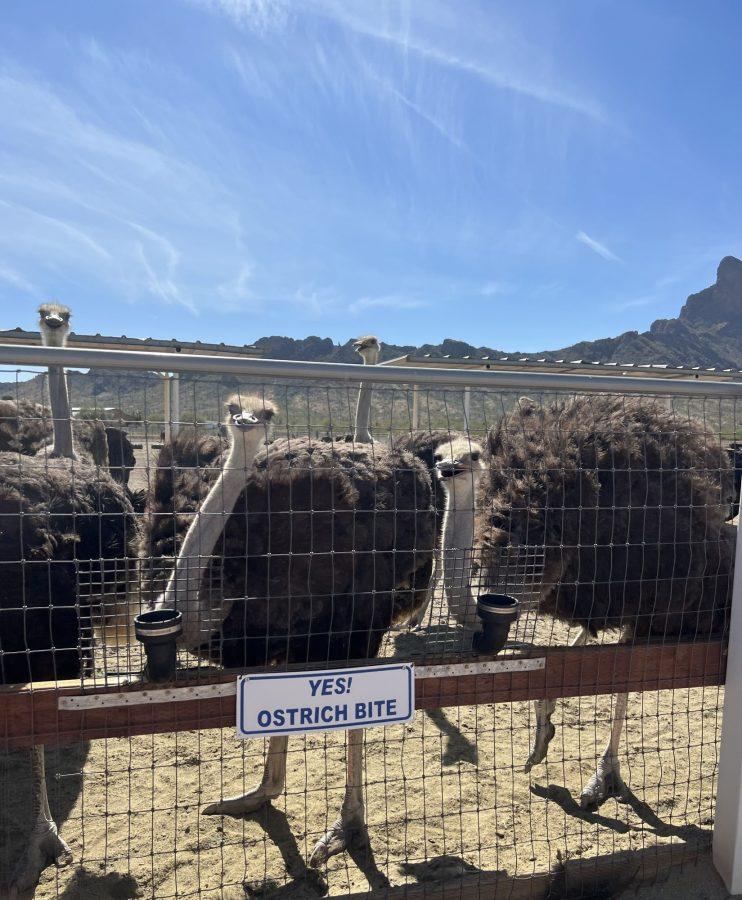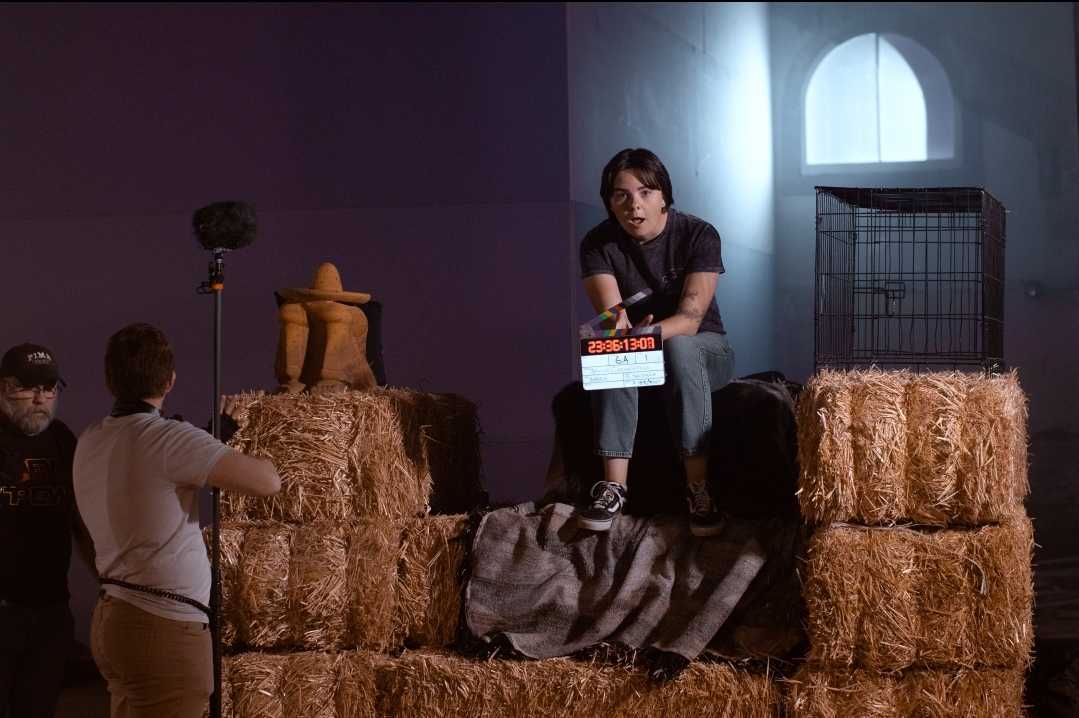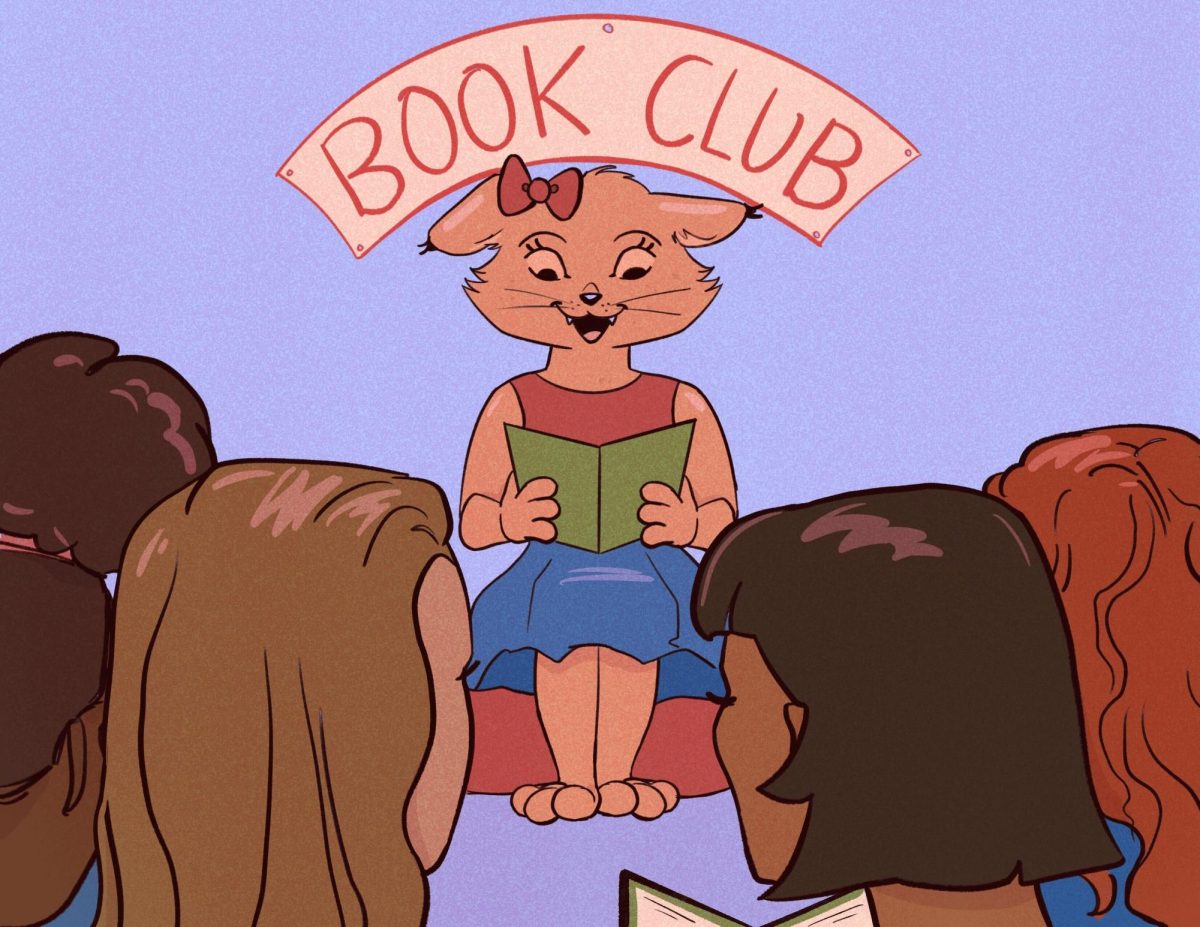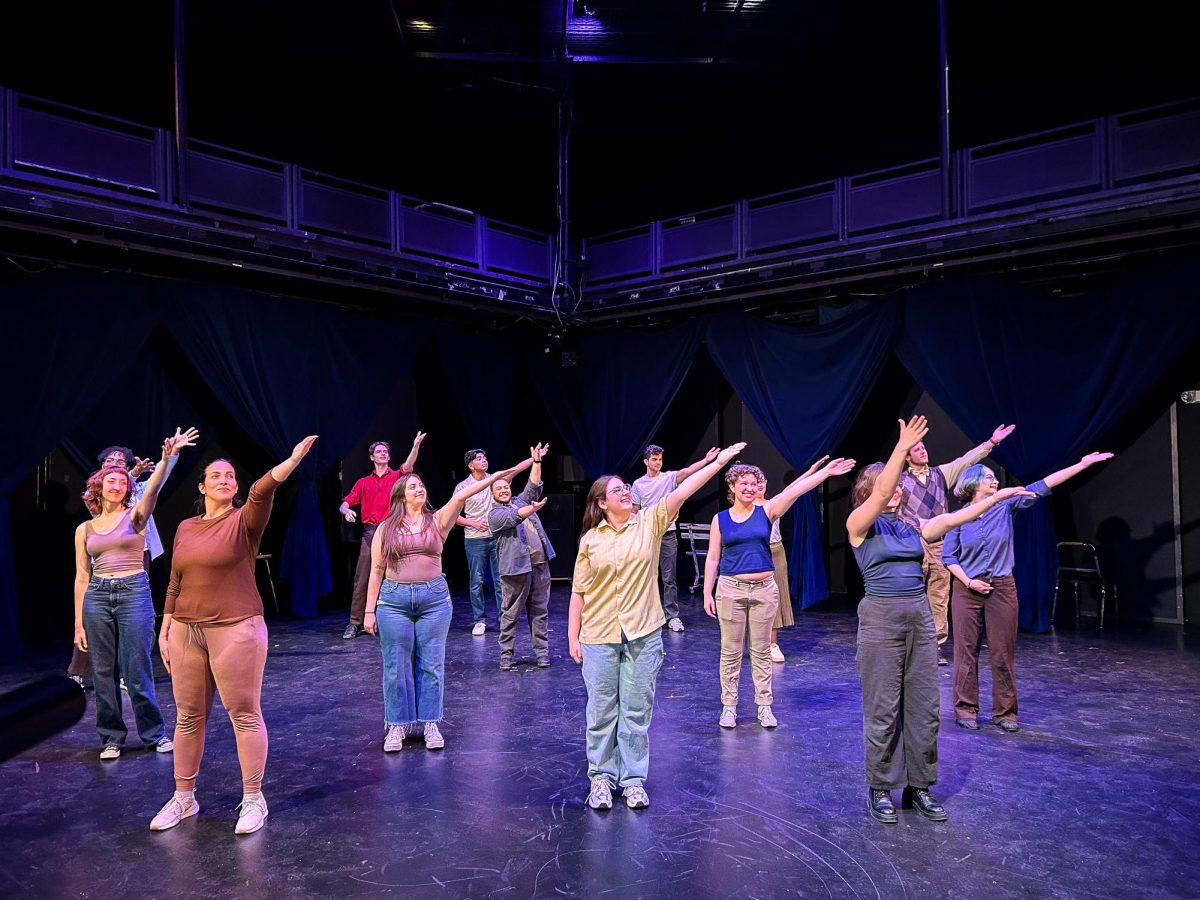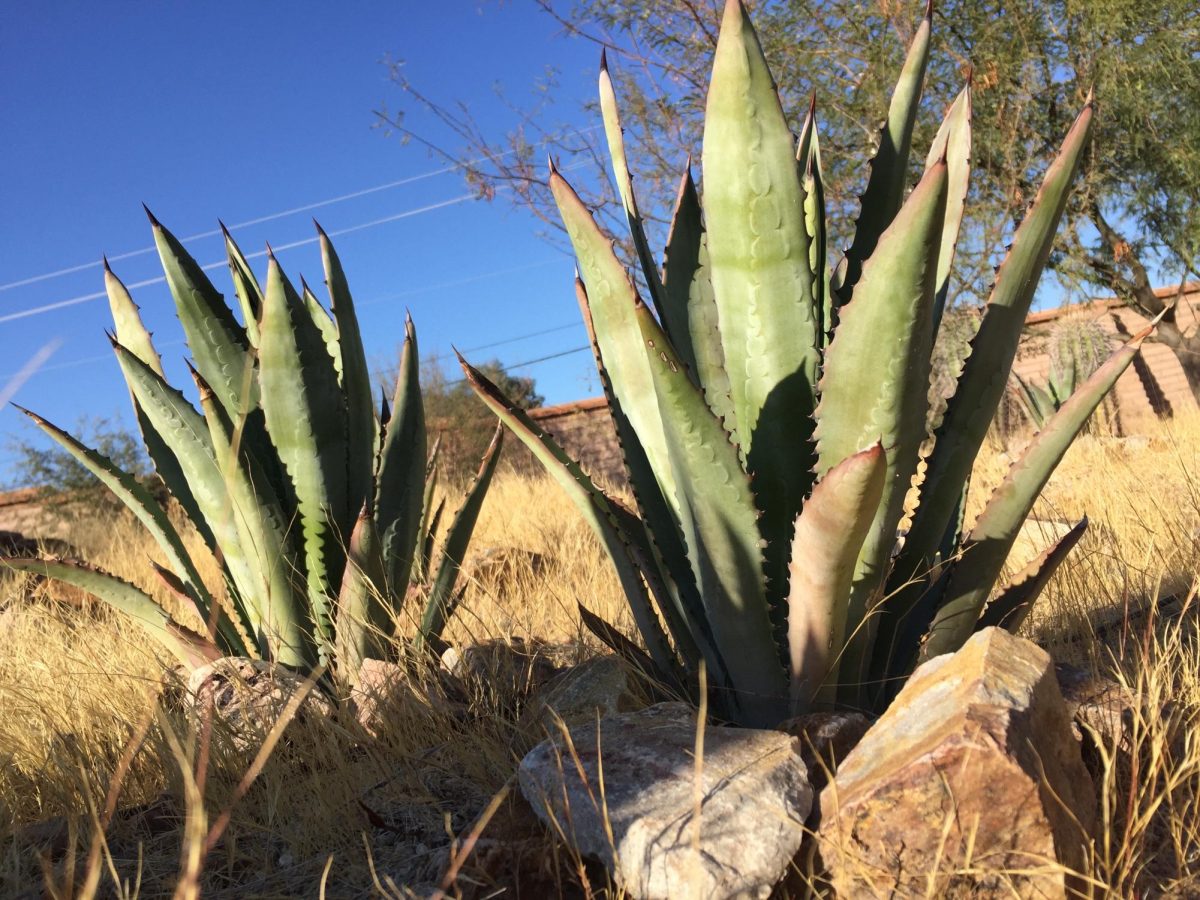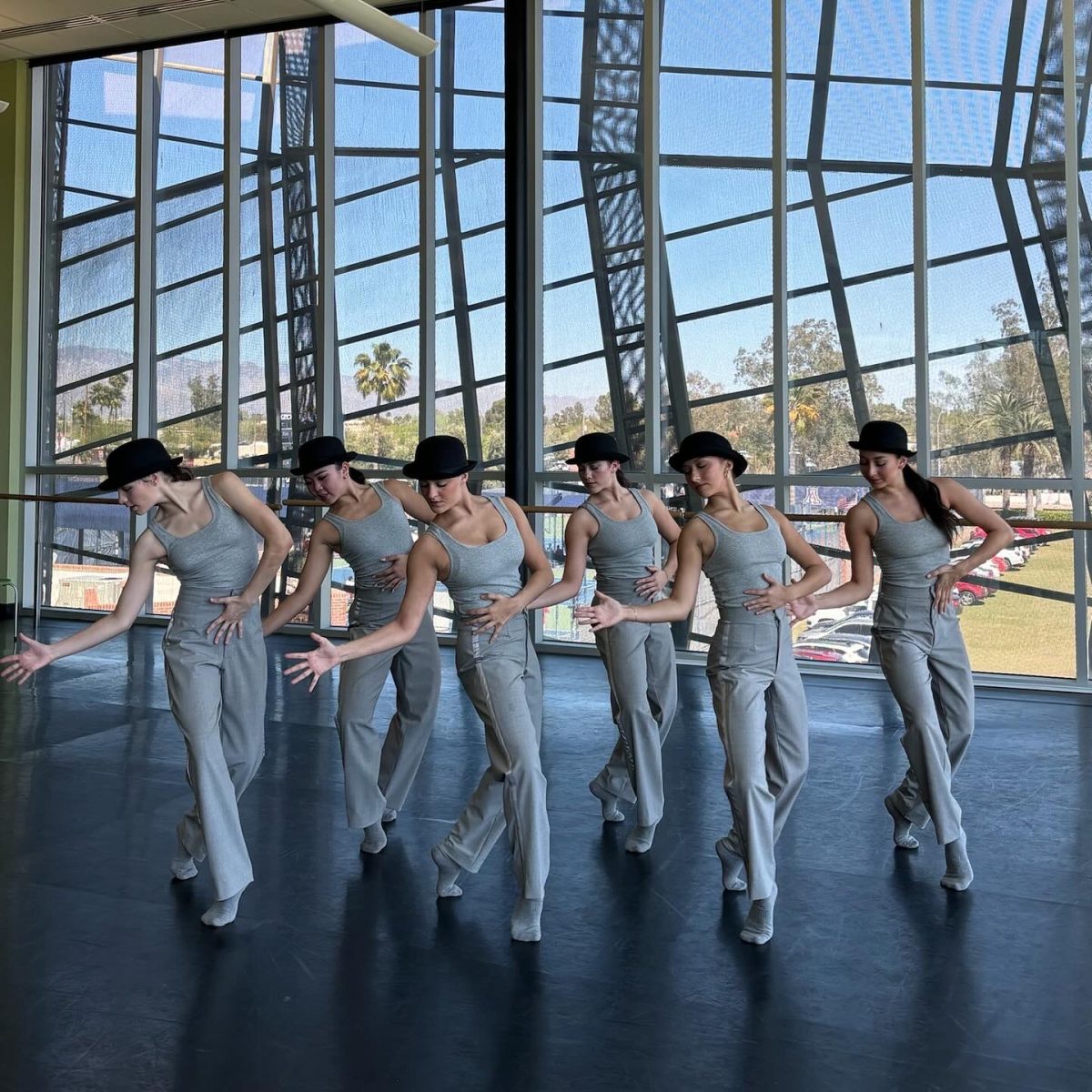The drive from Tucson to Phoenix and back is one many University of Arizona students make during their time at in college. Around the halfway point is something all drivers see and many drivers wonder about: the Rooster Cogburn Ostrich Ranch.
The Rooster Cogburn Ostrich Ranch has many different animals and is a popular attraction.
Toni Hunter, the manager at the ranch, explained its history.
“They originated back in the 80s. They started originally in Oklahoma and then made their way here to Arizona. Ostriches obviously didn’t do well back there so they brought them here to the hot and dry climates that Arizona has, so that’s how they started. They’ve been here for over 21 years, and it’s been open to the public for about that long,” Hunter said.
The ostriches are one of the main attractions at the ranch. Everett Cora, an assistant manager at the ranch, explained why the ostriches do so well in Arizona.
“In the U.S., the Arizona weather is the best climate for the ostriches to live. Very low humidity, just really dry heat, which is very similar to Africa, which is where they originate from,” Cora said.
Hunter explained their general audience at the ostrich farm.
“We get audiences of all sorts of types. During the winter, I get all my winter birds. During the summer, I get people that are just traveling through. Our summers are obviously shorter because of the heat. We get field trips too,” Hunter said.
Hunter described the original goals behind opening the ostrich ranch.
“For [the owners] at one point in time, it was for processing the meat. You know, ostrich meat is very lean. It’s 1% fat, it’s very healthy for you. You know of course we have the ostrich eggs. It’s the equivalent of 24 chicken eggs inside of one ostrich egg. The feathers are of value. The hide is of value; they make boots of the hide. The ultimate plan is to show the world that ostriches are good, they’re here, they’re healthy, they can be used for many things,” Hunter said.
RELATED: Local skate shop art show displays art on Dickies jackets
Hunter gave recommendations for guests if they visit the ranch.
“First time they come here I’d obviously recommend the number two package. You kind of get all the food, that includes stingray food, and you can feed all the critters we’ve got outside. We’ve got donkeys, deer, goats, ostriches, sheep, mini goats, bunnies, chickens, ducks. I got brand new tortoises that we just got, parakeets and stingrays,” Hunter said.
Included in the number one and two packages is the variety of food that is used to feed the different animals at the ranch. Roger Eernisse, a greeter at the ranch, gave a summary of what to feed each animal and how.
“Large green pellets are for all the large animals. Donkeys, deer, goats, sheep and ostriches. Single most important thing when you’re out here feeding, keep a flat hand at all times. Little seed sticks are for the parakeets and in your bottom cup are three gold coins,” Eernisse said. “We have chickens, rabbits and ducks. Food dispensers by each one. Use the gold coins to buy food to feed whichever of those animals you’d like to feed. Also, the gold coins work at the shooting gallery in the front lobby. Those little nectar cups are for the lorikeets.”
The types of animals at the ostrich ranch vary drastically. Cora recommended checking out his favorite animal on the ranch.
“My favorite animal is the Nigerian dwarf goats. They’re really chubby and really short with stubby legs. They’re just adorable when they run. I’d check them out,” Cora said.
Aiden Kelso, a pre-business student the UA, shared his experience at the ostrich ranch.
“The ostrich farm was an exciting place to stop on the way to UA. It’s a great place to spend the afternoon and is something new and interesting to do,” Kelso said.
Cora explained what he recommends for first time visitors.
“Just be prepared to have fun,” Cora said.
Follow the Daily Wildcat on Twitter



